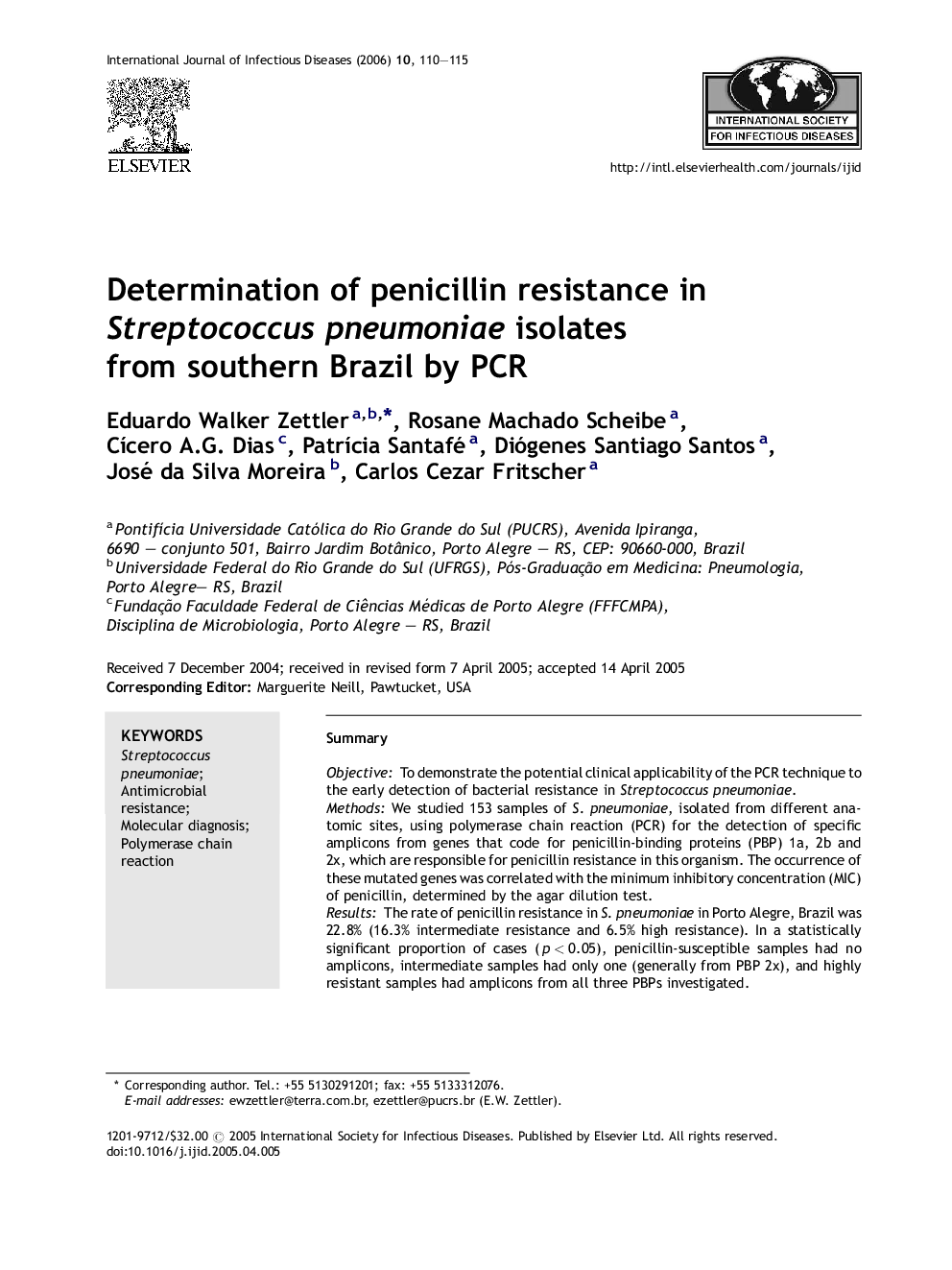| Article ID | Journal | Published Year | Pages | File Type |
|---|---|---|---|---|
| 3364657 | International Journal of Infectious Diseases | 2006 | 6 Pages |
SummaryObjectiveTo demonstrate the potential clinical applicability of the PCR technique to the early detection of bacterial resistance in Streptococcus pneumoniae.MethodsWe studied 153 samples of S. pneumoniae, isolated from different anatomic sites, using polymerase chain reaction (PCR) for the detection of specific amplicons from genes that code for penicillin-binding proteins (PBP) 1a, 2b and 2x, which are responsible for penicillin resistance in this organism. The occurrence of these mutated genes was correlated with the minimum inhibitory concentration (MIC) of penicillin, determined by the agar dilution test.ResultsThe rate of penicillin resistance in S. pneumoniae in Porto Alegre, Brazil was 22.8% (16.3% intermediate resistance and 6.5% high resistance). In a statistically significant proportion of cases (p < 0.05), penicillin-susceptible samples had no amplicons, intermediate samples had only one (generally from PBP 2x), and highly resistant samples had amplicons from all three PBPs investigated.ConclusionThese results suggest that penicillin resistance in S. pneumoniae in southern Brazil is on the increase, but is still lower than in other countries, and that PCR could be used for its early detection.
